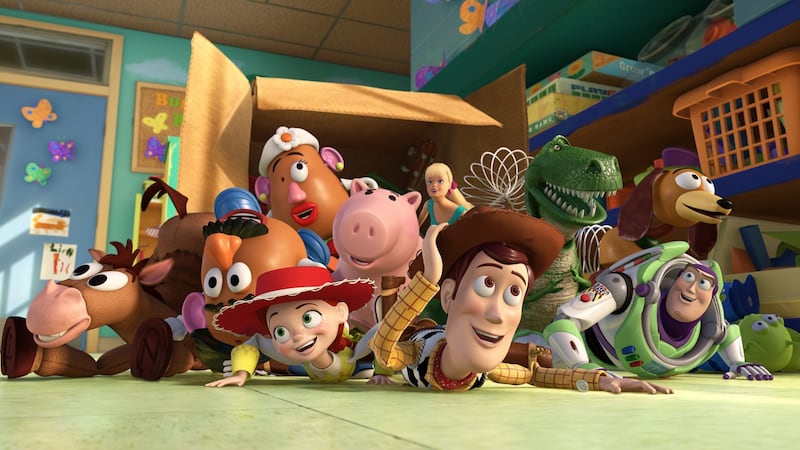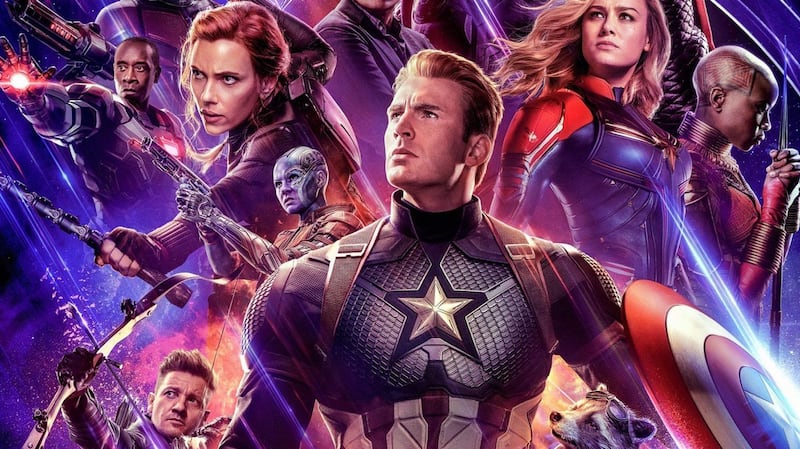It might have taken the Walt Disney company less than three years to overtake Netflix in streaming subscribers, but its road to domination started more than 15 years ago with a carefully planned $100 billion (€97 billion) strategy to reinvigorate its empire for 21st-century viewers.
The combination of Netflix priming a global audience for the streaming era and the serendipitous launch of Disney+ at the start of the pandemic, a service populated with crown jewel franchises such as Star Wars and Marvel, transformed what had been viewed as Disney’s late mover disadvantage into unprecedented breakneck growth.
Just 16 months after launch, a bargain-priced Disney+ hit 100 million subscribers — a feat Netflix took a decade to accomplish — and combined with the US streaming services Hulu and ESPN+, the company has now edged ahead with 222 million subscribers.
When it comes to winning the global streaming war, content is king. Disney, the owner of the most successful Hollywood film and TV studio in history, is the home of many of the world’s biggest and most-coveted franchises and characters thanks to a multibillion dollar buying spree that started in the noughties.
A Dublin scam: After more than 10 years in New York, nothing like this had ever happened to me
Patrick Freyne: I am becoming a demotivational speaker – let’s all have an averagely productive December
The top 25 women’s sporting moments of the year: top spot revealed with Katie Taylor, Rhasidat Adeleke and Kellie Harrington featuring
Former Tory minister Steve Baker: ‘Ireland has been treated badly by the UK. It’s f**king shaming’

In 2006, a year before Netflix made the pivot from DVDs by post to streaming that would ultimately revolutionise traditional TV viewing, Disney spent $7.4 billion buying Apple founder Steve Jobs’s Pixar, the animation hit factory behind Toy Story, Finding Nemo and The Incredibles.
This was followed in 2009 by the surprise $4 billion purchase of Marvel Comics’ superhero universe, bringing in a multitude of characters including Iron Man and Captain America, taking Disney into new live-action territory.
The third transformational buyout came when Disney snapped up George Lucas’s Lucasfilm, the production company behind the Star Wars and Indiana Jones franchises, for $4 billion in 2012. In each case the deals were criticised by City investors, but it has been Disney which has been laughing all the way to the bank.

In 2008, just before the launch of its first Marvel film — Iron Man starring Robert Downey Jr — Disney’s share price was about $15, valuing the business at $26 billion. The world’s biggest entertainment company is now trading at $112 a share, giving it a market value of $205 billion, almost twice that of Netflix.
“Disney has been successful in supplying a steady flow of high impact releases straight from the big screen while also expanding their franchises for streaming-only content,” said Richard Broughton, the executive director of the market research firm Ampere Analysis.
“Netflix just hasn’t had as many big franchise hits as they would have liked. Stranger Things has been the biggest, and to a lesser extent maybe The Witcher and The Crown, but they just don’t have assets the scale of Marvel, Star Wars or Pixar,” he added.
In 2018, the big players including Warner Bros and Comcast, which owns NBC Universal and Sky, began to stop licensing content to Netflix — and each other — in preparation of launching their own streaming services. Then Disney struck again, paying $71 billion for Rupert Murdoch’s entertainment business 21st Century Fox.
The deal, which included the 20th Century Fox Hollywood film and TV studio and FX Network, added a plethora of crown jewel assets including Deadpool, Avatar, Titanic, The Simpsons and Modern Family.
It also included ownership of Fox’s Hotstar streaming service in India, with its tens of millions of subscribers, which flattered the growth rate of Disney+ when it launched in late 2019.
The service, which is expected to lose millions of customers as Disney loses the rights to air Indian Premier League cricket, accounts for 58.4 million of 152 million global Disney+ subscribers. However, the low-cost model means users pay on average just $1.20 a month.

Disney is aggressively forecasting that Disney+ itself will overtake Netflix in 2024, as it remains in high growth mode. It added 14.4 million subscribers in the second quarter, beating analysts’ expectations, while Netflix struggled this year with its first loss of subscribers in a decade.
“In essence both companies are at different phases of growth,” said Paolo Pescatore, a media and telecoms analyst at PP Foresight. “Disney is still in start-up stealth mode when it comes to direct to consumer services. There are still millions of users to acquire as Disney continues to expand into new markets and rolls out new blockbuster shows.”
While Netflix is already available globally, bar China, Crimea, North Korea, Russia, and Syria, Disney+ is still in the process of international rollout. It recently announced its availability in a further 60 countries and territories.
Disney maintains Disney+ is on track to hit profitability in 2024, but staying on top is an extremely expensive business.
Competition for subscribers has ignited an unsustainable content war, at the same time as stretched household budgets have forced consumers to cut back on entertainment services. Netflix will spend about $17 billion making and licensing films and TV shows this year, and has a further $23 billion on its balance sheet for long-term content costs, plus $14.8 billion in long-term debt.
Disney is spending $30 billion on content across all its TV, film and streaming services this year, which includes expensive live sports rights such as NFL for ESPN. Disney said that since launch it had lost more than $7 billion funding Disney+.
After pursuing a bargain-priced strategy to drive growth, Disney is now following Netflix in instituting significant price increases, starting in the US, as investors’ focus shifts to costs and profitability.
Both companies will launch part advertising-funded subscription options in an attempt to appeal to more cost-conscious consumers as growth in subscribers and revenues in the global streaming market slows.
For now, Netflix remains the single biggest global streaming service, with analysts at Ampere predicting a longer timeline for Disney+ to achieve global parity.
“Disney’s growth will slow in the next few years,” says Broughton. “Factors include the loss of the Indian Premier League rights and the need to raise prices — our data suggests subscribers are now cancelling entertainment services to cut costs — which will contribute to a similar slowdown as we are seeing at Netflix. We think that Disney+ and Netflix will about match one another as the world’s biggest services at 240 million global subscribers in 2027.” — Guardian




